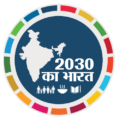The goal of eradicating poverty in all its forms everywhere is more crucial than ever before. The 2030 Agenda for Sustainable Development sets this as a pivotal objective. Extreme poverty, characterized by living on less than $2.15 per person per day at 2017 purchasing power parity, had been steadily decreasing for decades. However, the emergence of COVID-19 marked a turning point, reversing these gains and causing the number of individuals living in extreme poverty to increase by almost 90 million over previous predictions.
The Challenge of Poverty Eradication
Even before the pandemic, the momentum of poverty reduction was slowing down. Now casting suggests that by the end of 2022, 8.4 per cent of the world’s population, possibly as many as 670 million people, could still be living in extreme poverty. This setback effectively erased approximately three years of progress in poverty alleviation. If current patterns persist, an estimated 7% of the global population, around 575 million people, could still find themselves trapped in extreme poverty by 2030, with a significant concentration in sub-Saharan Africa.
The Resurgence of Hunger
A shocking revelation is the resurgence of hunger levels to those last observed in 2005. Equally concerning is the persistent increase in food prices across a larger number of countries compared to the period from 2015 to 2019. This dual challenge of poverty and food security poses a critical global concern.
Understanding the Causes of Poverty
Why is there so much poverty? Poverty is a multifaceted issue with various causes, including unemployment, social exclusion, and high vulnerability of certain populations to disasters, diseases, and other phenomena that prevent them from being productive.
The Interconnected World
Why should I care about other people’s economic situation? There are many reasons, but in short, it’s because our well-being is interconnected. Growing inequality is detrimental to economic growth and undermines social cohesion, increasing political and social tensions and, in some circumstances, driving instability and conflicts.
The Role of Social Protection
Why is social protection so important? Strong social protection systems are essential for mitigating the effects and preventing many people from falling into poverty. Despite the expansion of social protection during the COVID-19 crisis, 55 per cent of the world’s population, about 4 billion people, are entirely unprotected.
In response to the cost-of-living crisis, 105 countries and territories announced almost 350 social protection measures between February 2022 and February 2023. Yet 80 per cent of these were short-term in nature, and to achieve the Goals, countries will need to implement nationally appropriate universal and sustainable social protection systems for all.
Taking Action
What can you do about 2030 Agenda? Your active engagement in policy making can make a difference in addressing poverty. It ensures that your rights are promoted and that your voice is heard, that inter-generational knowledge is shared, and that innovation and critical thinking are encouraged at all ages to support transformational change in people’s lives and communities.
Government’s Role
Governments can help create an enabling environment to generate productive employment and job opportunities for the poor and the marginalized.
Private Sector’s Responsibility
The private sector has a major role to play in determining whether the growth it creates is inclusive and contributes to poverty reduction. It can promote economic opportunities for the poor.
Science and Poverty Reduction
The contribution of science to end poverty has been significant. For example, it has enabled access to safe drinking water, reduced deaths caused by water-borne diseases, and improved hygiene to reduce health risks related to unsafe drinking water and lack of sanitation.
Conclusion
In a world striving for progress and equality, the goal of ending poverty in all its forms everywhere is not just a distant dream; it’s an urgent necessity. It requires the collective efforts of governments, the private sector, and individuals like you. Poverty’s impact ripples through society, affecting us all. By understanding its causes, promoting social protection, and actively engaging in solutions, we can move closer to achieving the Sustainable Development Goals by 2030.
Frequently Asked Questions (FAQs)
1. What are the Sustainable Development Goals for 2030?
The Sustainable Development Goals for 2030, often abbreviated as SDG 2030 or Agenda 2030, are a set of global objectives aimed at addressing various global challenges, including poverty eradication, environmental sustainability, and social equality.
2. How has COVID-19 affected poverty rates?
The emergence of COVID-19 had a significant impact on poverty rates worldwide. It reversed previous gains in poverty reduction, leading to an increase in the number of individuals living in extreme poverty.
3. Why should I care about poverty in other parts of the world?
Caring about poverty in other parts of the world is essential because our well-being is interconnected. Growing inequality can have negative consequences for economic growth and social stability, affecting people everywhere.
4. What is the role of social protection in poverty alleviation?
Social protection plays a crucial role in preventing people from falling into poverty. It provides a safety net for individuals and families, particularly during times of economic hardship or crises.
5. How can I contribute to ending poverty?
You can contribute to ending poverty by actively engaging in policy making, advocating for social protection measures, and supporting initiatives that promote economic opportunities for marginalized populations. Your involvement can make a significant difference in the fight against poverty.

